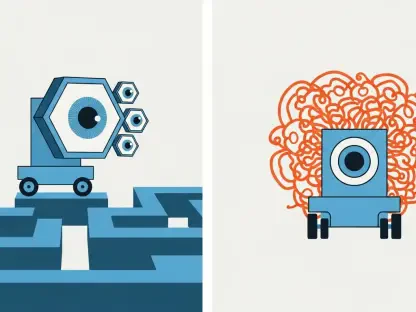Listen to the Article
Today’s AI-powered business landscape continues to make agents smarter and more powerful, ushering in a new world where automatic execution is the norm.
However, a challenge still remains: Connecting many agents with data and enabling them to coordinate with AI tools. That’s where Anthropic’s brainchild, The Model Context Protocol, comes into play.
Designed to revolutionize how AI models interact with external data sources and tools, the Model Context Protocol works like the USB-C for AI applications. This universal open standard enables seamless, secure, two-way communication between AI systems and various data repositories.
Instead of crafting bespoke integrations for each data source (a developer’s nightmare), the protocol offers a standardized bridge, simplifying the entire process.
Naturally, developers and AI professionals are on the lookout for new ways to harness the power of this new protocol. And rightly so. If you’re thinking the same, then you’ll surely appreciate this article revealing:
The full idea behind the Model Context Protocol;
Its benefits and shortcomings;
And practical use cases for your business.
The Model Context Protocol
This open standard links AI systems to multiple data sources, streamlining integration without requiring custom code for each connection, according to Anthropic.
AI assistants are advancing rapidly, but their potential is limited by data silos and fragmented integrations. Each new data source requires a custom implementation, making scalability a challenge. The Model Context Protocol solves this by establishing a universal, open standard for AI-data connectivity. By replacing isolated integrations with a single protocol, it simplifies access to critical data, enabling more reliable and scalable AI systems.
It allows developers to establish secure, two-way connections between AI tools and their data sources. Its architecture offers flexibility, developers can either expose data through the Model Context Protocol servers or build AI applications (Model Context Protocol clients) that connect to them.
Coding platforms like Replit, Codeium, and Sourcegraph are already leveraging this standard to develop AI agents capable of executing tasks on behalf of users. By streamlining connections between AI systems and multiple data sources, the protocol simplifies integration for developers and companies. As the industry moves toward agentic AI, this capability is set to become even more essential.
The Benefits and Shortcomings of the Model Context Protocol
The Model Context Protocol accelerates AI adoption by solving four critical challenges in a single framework. It streamlines integration by replacing fragmented APIs with a universal standard, making it easier to connect large language models with Software-as-a-Service platforms. Its structured context management enables AI to handle multi-step workflows autonomously, reducing the need for constant human intervention.
By eliminating redundant processing, the protocol enhances efficiency and lowers computational costs. Finally, its built-in security and compliance framework ensures governance over context storage and sharing, allowing enterprises to meet regulatory requirements without sacrificing flexibility. These capabilities position it as a foundational standard for scaling AI in production.
However, embracing the Model Context Protocol might not always be the right fit. If you’re building standalone AI applications without external integrations, its protocol overhead adds complexity without benefits, simple API calls will work better.
For rapid prototypes and minimum viable products, speed matters more than architecture, and leveraging this structure can slow development. In a fast-moving AI landscape where standards struggle to gain traction, committing too soon may be unnecessary. If your project is simple, self-contained, or short-term, traditional approaches will keep things efficient without the added complexity.
Practical Use Cases
This protocol excels in specific use cases. If you’re developing AI-first applications like general-purpose assistants or IDE tools that interact with multiple AI services, Model Context Protocol standardizes cross-platform communication, reducing integration headaches. For scalable AI services requiring distributed processing or complex workflow orchestration, it simplifies managing growing complexity. It’s also a strong choice for platform integrations embedding AI capabilities, like Claude Desktop or cross-app assistants, where its standardized protocols ensure long-term interoperability.
However, with Model Context Protocol still in its early stages (launched November 2024), adopting it now means trading widespread industry support for first-mover advantage.
There are many ways to leverage this innovation to your advantage, such as:
Transforming Enterprise AI Search
You need an AI assistant that truly understands documents. With Model Context Protocol integration, your assistant goes beyond basic Q&A by directly ingesting, interpreting, and referencing source materials through client file systems. This connection delivers verifiable answers with direct document links and maintains strict access controls. It eliminates manual document searches, turning your interface into a real productivity tool.
Although you must set up structured document repositories and use clean file formats, the payoff is an assistant that grasps full document context instead of just surface-level queries.
Evolving Recruitment
When you integrate Model Context Protocol into your AI-powered interview assistant, you transform it from a basic scheduling tool into a robust candidate intelligence partner. By connecting your AI agent to your clients’ applicant tracking systems through Model Context Protocol, you enable the solution to process complete candidate profiles (including resumes, cover letters, and LinkedIn data) and deliver concise, actionable summaries directly to your interviewers via workflow tools like Slack.
This gives you instant context to conduct more meaningful interviews without manual profile reviews. Although setting up requires clean applicant tracking systems data pipelines, the result is a seamless experience where candidate insights automatically reach the right people at the right time, boosting both interviewer effectiveness and candidate experience.
Creating an Efficient Support Chatbot
For customer support teams using multi-LLM chatbots, integrating this approach closes the context gap between your AI models and support systems. By connecting your GPT-4, Gemini, or Claude-powered chatbot to ticketing systems, knowledge bases, and customer relationship management platforms via Model Context Protocol, you create a unified interface where every LLM accesses real-time case data, customer histories, and product information.
This transforms your chatbot into a contextual support agent that reads ticket details, updates case statuses, and retrieves relevant documentation automatically. Although the technical setup requires careful permission management, the outcome is a support experience where AI agents operate with full situational awareness, reducing resolution times and maintaining strict data governance.
Conclusion
The Model Context Protocol changes how AI systems access data by replacing clunky, custom integrations with standardized, seamless connections. As AI agents become more advanced, you face the challenge of accessing data for true contextual understanding across documents, recruitment workflows, customer support systems, and more.
The Model Context Protocol solves this bottleneck by providing a solid foundation for scalable, secure, and intelligent automation. Early adoption requires careful planning, especially for simple or short-term projects, but its potential to future-proof complex AI ecosystems is clear. For enterprises building AI-first applications, distributed services, or platform integrations, this new standard delivers the architectural base you need for the era of connected AI. Make sure your organization is ready to harness its full potential.









